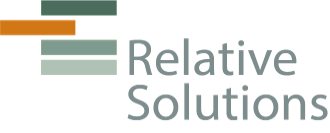The Five Dimensions of Sustainability
Family Legacy and Connection
Families tend to think that sustainability is a matter of maintaining the legacy of the business established by the founder. Legacy, like the family itself, is a living thing that changes and must adapt and grow. Legacy is more than history of the family assets. It’s the lifeblood of the family.
There are several areas in which family legacy and connection can address and advance sustainability, all of them touching on understanding the conditions that are necessary for the family to deal with each other on a collective and collaborative basis.
This dimension focuses on purpose: What is our vision? Why are we together at all? What are we doing? What do we want to do together, if anything? This idea of purpose raises the basic question of do we want to remain together—and if the answer to that is yes, then what are the ways that we want to do that and what are the capabilities we need? This dimension also addresses questions around communication, such as: How do we communicate? Are we respectful and thoughtful? Are we able to collaborate effectively?
Governance Structures and Processes
The right structures and processes help keep enterprising families on track during their ongoing journey to sustainability. In the early stages of a family enterprise, the founder usually handles all matters having to do with governance. But, as families grow and as their joint assets and enterprises expand, it’s helpful for founders to broaden decision-making and increase transparency. Families benefit when governance structures match the complexity of their membership and their assets. There is no “one size fits all”; each family needs to take on the task of deciding how best to incorporate all the voices in decision-making around their shared ownership.
As family members begin to find their voice, new questions emerge: What do we have to decide together to achieve our purpose? What are the right structures for us now, and who should be making decisions in those structures? What are the policies and processes that permit a greater number of family members to have access to decision-making around joint ownership of assets? Who serves on the board, those who hold shares or any family member who has the capability? What are the capabilities to serve? At what level does the board serve the family and its holdings? How does the family voice get heard and on what issues?
Financial Accountability and Management
Financial accountability and management are about developing and evolving appropriate practices and guidelines in areas such as oversight of shared and individual assets, financial responsibility and the continuation of wealth into the future.
This is often a crucial dimension, particularly for older family members who may feel as though the lack of fiduciary understanding, responsibility, and oversight in the next generation is what “keeps them up at night.” Establishing policies and reporting that facilitate financial oversight and the ability to evaluate and manage joint risks and opportunities can greatly assist in the successful generational transfer of wealth.
An important element of this dimension addresses educating and preparing the next generation for financial ownership and the associated expansion of decision-making responsibilities. It addresses the need for family members to be accountable for their own fiscal lives and to engage in long-term learning through practical experience and more formalized study.
To ensure sustainability, the next generation must not only maintain but build the family financial resources as the family grows in size. Except in the very wealthiest of families, the need to be able to work/provide a living for oneself is important, as it may directly or indirectly increase the family’s ability to be sustainable.
Human Capital and Leadership Development
Human capital and leadership development have everything to do with the intellectual, social, emotional, and spiritual capital of the family. Just as families carefully manage their financial balance sheet, families can create a balance sheet for human capital which permits them to assess and enhance family capabilities over time.
The more family members shift from the perspective of an owner-operator to that of an investor-owner, the more the family must attend to developing connections to both the family assets and other family members through education and learning. Participating in joint activities that promote the development of all family members not only increases the total human capital balance sheet but also increases the opportunities for learning how to work and make decisions together.
Though not every family member can or wants to be a leader, ideally every family is able to make a contribution. Enterprising families can invest in their human capital by creating opportunities for the majority of family members to develop their own diverse capacities, not just those that directly enhance the family enterprise.
Generosity and Gratitude
Being generous is not just about financial generosity. It has to do with the ability to be generous in your heart and to act from a sense of abundance. Gratitude is about being able to see that others contribute to our well-being and success in many ways and to be appreciative of all those contributions. Having a good sense of these two concepts goes a long way to balancing out a belief that one creates his/her success on their own and decreases the sense of entitlement that often accompanies that belief.
Generosity is also about responsibility to the greater world beyond the individual. Enterprising families strive to live in accordance with the adage that with great wealth comes great responsibility.
With many young people in enterprising families leading the way, the focus on generosity and responsibility has increased and changed overtime. Families are rethinking giving only of their financial wealth and are placing a high value on other forms of generosity and philanthropy, particularly in areas that the government is no longer highly supporting—like social reform.
Generosity and gratitude increase a family’s sustainability because these areas add to the family’s sense of purpose and to overall family collaboration.







